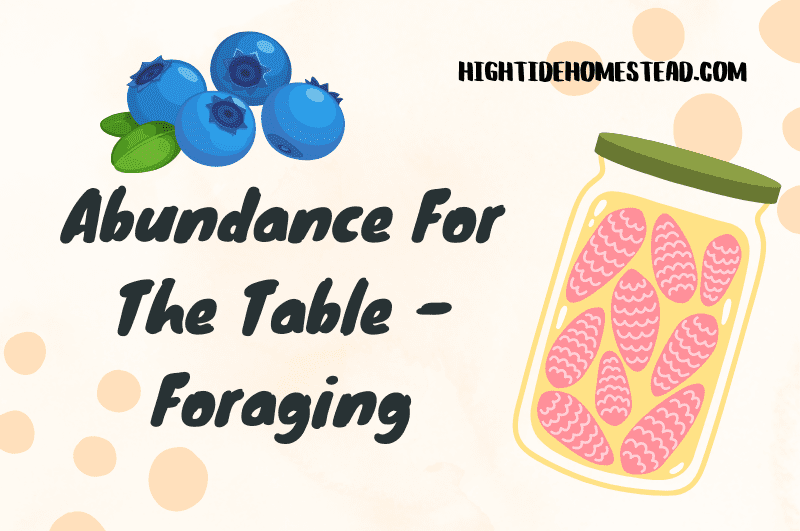High Tide Homestead participates in affiliate programs and may earn commissions from qualifying purchases on this post. See our Disclosure page for more information.
Alaska is known as the land abundance for a reason. Even though we live on the edge of USDA zones 3/4, I can’t step outside without being surrounded by food. In fact, when we were first researching our move Kyle and I joked that there was no way to starve out here as long as we went foraging to use the abundance around us!
Eat em raw:
There are plenty of yummy edibles for raw eating growing right in our yard. Some of our favorite spring snacking includes fireweed shoots, young plaintian leaves, beach peas and sea chickweed. There are also dandelions, lambs quarter, clover, and cow parsnip. And numerous other greens that can be tossed in a salad after a quick rinse. And don’t forget all the blueberries, crow berries, salmon berries and lingonberries!
Warning: care should be taken while harvesting cow parsnip as the sap contains furanocoumarins (fyur-a-no-coo-MAR-inz), phototoxic chemicals that are activated by ultraviolet rays in sunlight. Use gloves while harvesting to avoid photosensitive burns.

Cook em up:
Some of the plants growing on our property are edible, though they require some preperation first. These include devils club buds (before the spines harden), fiddle heads, and many types of mushrooms. Sauteed or used as greens in soups and stews is a great way to eat many of the plants that need cooked. Stinging nettles can be cooked or pulverized, like in a pesto, to make them edible.

Save em for later:
Along with eating raw and cooking the wild foraged foods here, there are also many ways to preserve them for later use. From making devil’s club bud pickles, to freezing, to canning, to jams and wild flower jellies, and even making syrup. There are tons of ways to enjoy summer edibles in the depths of an Alaskan winter.

Foraging is one of my favorite summer pastimes.
Utilizing the abundance of natural resources Alaska has to provide is important part of our lives out here. And I love to use foraging as an excuse to explore our property and the surrounding areas. The girls love to learn about foraging with me too, often pointing out edible plants in our friends yards, even in town. It’s such an important skill to have out here, and I’m happy to share it with them.

Disclaimer: Some plants have inedible or poisonous look-alikes. Be sure you know what you’ve harvested before eating any wild plant.There are many excellent field guides to edible plants to consult before going on foraging expeditions and again before you eat.
High Tide Homestead participates in affiliate programs and may earn commissions from qualifying purchases on this post. See our Disclosure page for more information.
